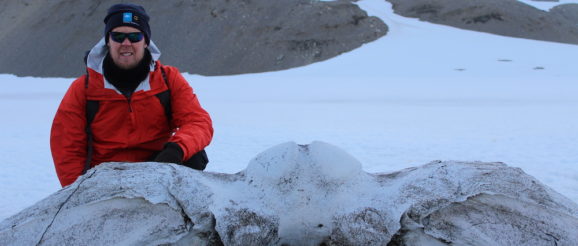Strategy Share: Coding and Innovation for Our Planet’s Future – National Geographic Education Blog

Our Strategy Share series features innovative ideas, projects, and approaches from our community of educators. This post was written by Casey Charles after his expedition to the Arctic as a Grosvenor Teacher Fellow with Lindblad Expeditions and National Geographic Education.
On my Grosvenor Teacher Fellowship expedition to Norway, I saw first-hand evidence of our changing global climate and developed the passion and desire to ask, “What can we do?” In my classroom, I have developed a culture of innovation and technological design. Was there a way I could work with my students to develop innovative, technological solutions to increase their awareness of our global impact?
The answer is, of course, yes. Teachers can use coding and innovation, crucial components of 21st-century education, to have students examine environmental issues.
Why Coding?
Innovation, in particular technological innovation, is a skill that our students need—not only for their own careers, but to develop a “fixer” mentality. Coding and the development of problem-based inquiry will allow our students to find solutions to issues on any scale, from personal to global. Sharing stories of other youth who have developed solutions and products can inspire our students to engage with this process.
Teachers need not fear their own lack of experience with coding and programming. I will outline how I help students achieve a level of comfort and knowledge that allows them to solve their own problems.
Introduction to Coding with Hour of Code
First, I have students complete a series of activities on Hour of Code–a free, online website that has hundreds of coding games and activities. These games are engaging and also teach a number of essential skills. One period of free play time on the website is a good start; however, I like to have students complete these introductory activities (Part I at the link) to gain a foundation for our innovation challenge.
From this point on, I have the students use Circuit Playground Express programmable circuit boards (available here, along with the necessary battery packs). Other similar options that will work well include micro:bits and Arduinos. I find CP Express boards valuable because they have built-in sensors (for light, sound, motion/tilt, and temperature) as well as LED lights and a speaker for sound. They are a great board for introductory programming, while older, more experienced high school classes may want more challenging circuit boards such as micro:bits and Arduinos.
MakeCode, the programming site for CP Playground Express boards, is user-friendly and can toggle between blocks and JavaScript for more advanced users. It looks very similar to Scratch, so the transition from the above introductory activities is simple. I have students do a few challenges (Part II at the link) to practice with the sensors, such as using the tilt sensor to make sounds, sound sensor to operate a servo motor, etc.
If you do not have access to devices like the CP Playground Express boards, you can use the block-based programming language, Scratch, to have students code solutions without physically building a prototype. They can “virtually” explain what their product might be and sketch it out using technical drawings or blueprints. During this process, you can simply evaluate the students’ designs on their creativity and feasibility, or, if you are comfortable with coding, take a look at the code and whether it would succeed at its intended task. MakeCode also has a “Virtual CP Express” that you can program and test right on the site—you can even “shake” it!
The Innovation Challenge
Once students are comfortable with the coding process and devices, they are ready to begin. I first ask students to brainstorm big ideas about how we can reduce our ecological footprint. Articles and photos about climate change will help them develop ideas about reducing waste and energy consumption.
Then, the students have to choose and solve a problem, one that they decide is important. At this point, I believe it is important as an educator to step back and let the students develop their own problems. If the problem is simply presented to them, they lose ownership of the idea.
It is important to note that the purpose of innovation is to find a solution to a problem, not to “invent something.” In fact, stress to the students that they must identify a problem first, then try to see if they can find a solution using their materials. If not, they may need to come up with another problem.
As you step back, allow the students to struggle without intensive intervention. “Fail your way to success” is the motto here. You will be amazed at their resiliency and at the strategies they develop to problem-solve.
My seventh- and eighth-grade students created some amazing devices with little guidance. For example, students developed:
This may sound like a lot of new information, but remember that you need little to no expertise in coding—just a passion for getting students thinking about solving global environmental issues. The process outlined above will open the door for students to become comfortable with the coding process, and they will easily take the lead on directing their own learning. Experimenting and creating with these tools shows students how they can use today’s advanced technology to improve our ecological footprint.
Casey Charles is a seventh- and eighth-grade teacher in Thunder Bay, Ontario, Canada.
This post reflects a Grosvenor Teacher Fellow’s field-based experiences on a voyage with Lindblad Expeditions. The Grosvenor Teacher Fellowship is a professional development opportunity for pre-K–12 educators made possible by a partnership between Lindblad Expeditions and National Geographic Education.
